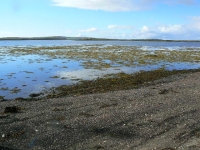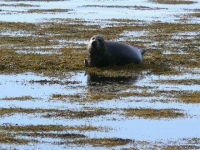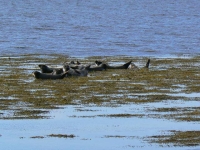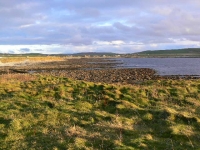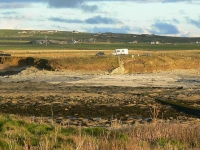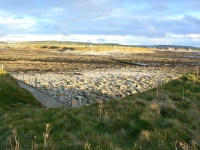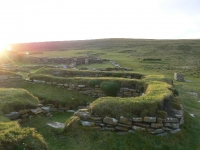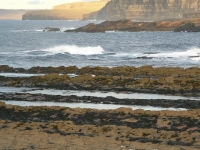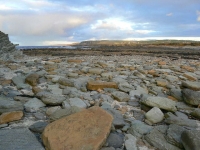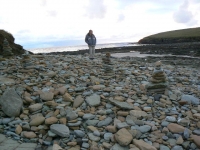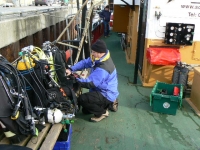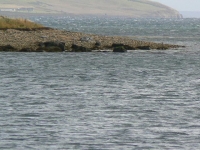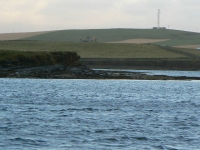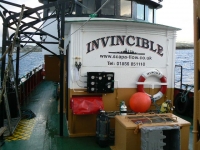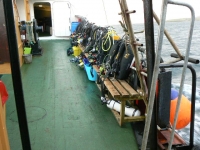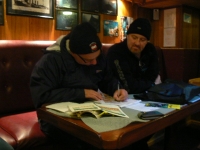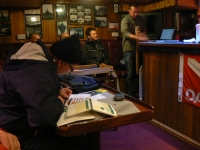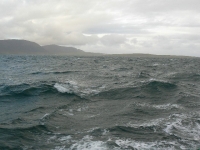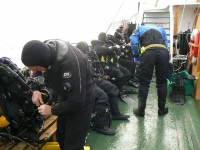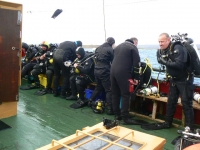Scapa, the return visit
When the invitation to go to Scapa came in, I checked my logbook. Sure enough, I had already done it, so why would I want to go back? After all the wrecks were where I left them last time and what would have changed.
During my previous visit, I had just qualified as a sport diver and had at least 2 decompression dives to my experience. From what I remember every dive where I arrived on the surface without my computer beeping at me was seen as a triumph and an achievement. I seemed to of spent most of the dive checking my computer and air to such an extent that I missed most of the dive. I also remember that by the end of the week all the wrecks looked the same and consisted of lumps of metal at the end of a rope.
This visit was different. The long drive hadn’t changed (10 hours) but was a bit more comfortable in my car rather than an over packed minibus. Arriving at the ferry port, we bumped into 2 other divers, of all the passengers waiting in the terminal; it’s hard to believe that we should pick 2 others to talk to who were on the same boat.
 On the first day a guide to the boat was given by the skipper Ian, following this a brief was given by Kieran as to what to expect. This was the first major difference to my previous visit. Prior to each dive, detailed pictures and guides were shown, so that divers could pick what they wanted to see on the wreck and go straight to it. Previously, the diving consisted of descending the shot, find the wreckage and swim around. I found myself pin pointing areas that were of interest to me. This enable me to spend time looking at wreckage and knowing what it was (such as a search light iris).
On the first day a guide to the boat was given by the skipper Ian, following this a brief was given by Kieran as to what to expect. This was the first major difference to my previous visit. Prior to each dive, detailed pictures and guides were shown, so that divers could pick what they wanted to see on the wreck and go straight to it. Previously, the diving consisted of descending the shot, find the wreckage and swim around. I found myself pin pointing areas that were of interest to me. This enable me to spend time looking at wreckage and knowing what it was (such as a search light iris).
Rather than giving a detailed description of each of the dives, I would prefer to explain what I personally got from the week. There are plenty of books out there that give better descriptions of the wrecks than I can.

My skills have evolved considerably since last time (according to some that is). I no longer spent the whole dive worrying about the ascent to the surface and the impending decompression time. At the end of each dive I deployed my SMB from mid water, without the contemplating the disaster that would ensue if I got it wrong and followed it up. Decompression was carried out mostly at 3m apart from days where the sea was rough where a slightly deeper decompression was undertaken. Swapping of cylinders to my decompression gas was second nature; I had plenty in my cylinders even at the end of the dive.
For me the trip to Scapa was most enjoyable and enabled me to put my skills learnt in the club to full use. We often ask why our instructors put us through so much during training, particularly when other agencies think it unnecessary and give certification out over the course of 2 weekends. Only after gaining experience since my previous visit can I see that not only training, but also experience not only makes us safer divers but also more comfortable with our surroundings and makes the whole experience more enjoyable, unless your reason for diving is to scare yourself witless and consider just getting back on the boat an achievement.

